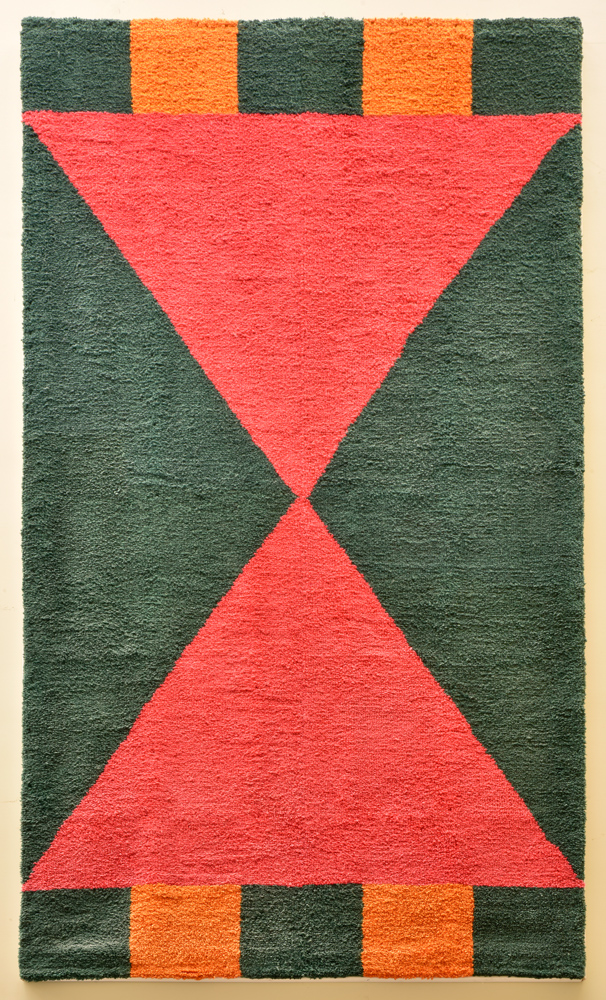Currently not on display

© Marjorie Yuzicappi. Reproduced with the permission of the artist. Photograph by the University of Regina.
Tapestry (Tah-hah-sheena), c. 1970
Wool, linen
144” x 72”
University of Regina President’s Art Collection; pc.1971.3
The Sioux Handcraft Co-operative was an arts and crafts organization established on the Standing Buffalo First Nation in the Fort Qu’Appelle area in the late 1960s. The idea for the co-operative was suggested by a local settler woman who observed that the women of the reserve retained skills in historical Sioux designs and approached them with a proposal of how to use these skills in a contemporary media – rug hooking. Through the co-operative, participants were able to maintain a connection to historical design traditions in addition to generating income.
The rugs were named Tah-hah-sheena, a Sioux word to describe decorated animal hides worn during ceremony and social gatherings. When not in ceremonial use, Tah-hah-sheena were hung inside tipis providing insulation and aesthetic adornment. Rug designs incorporated familiar motifs used to decorate tipis, clothing, tools, and ceremonial objects. Some designs were imbued with human qualities such as courage, strength, wisdom, and pain, and had a spiritual connection. Others were simply developed aesthetically, based on the taste of the artist.
Geometric patterns were traditionally created by women. Expanding on a tradition of using up all available materials and decorating utilitarian items, the rugs were sometimes backed on leftover burlap food sacks using scraps of fabric. The rugs at the University of Regina are backed in linen and woven with commercially available wool.
Three non-ceremonial Tah-hah-sheena were commissioned by the University in 1970. Designs and colours were selected by the committee for artists Martha Tawiyaka, Bernice Runns and Marjorie Yuzicappi. Yuzicappi was also the co-operative’s Secretary and negotiated funding for its expansion. Several artists were employed in the construction of each tapestry, working under the supervision of the designer. Each Tah-hah-sheena is said to have a deliberate error to recognize that humans are inherently imperfect.


